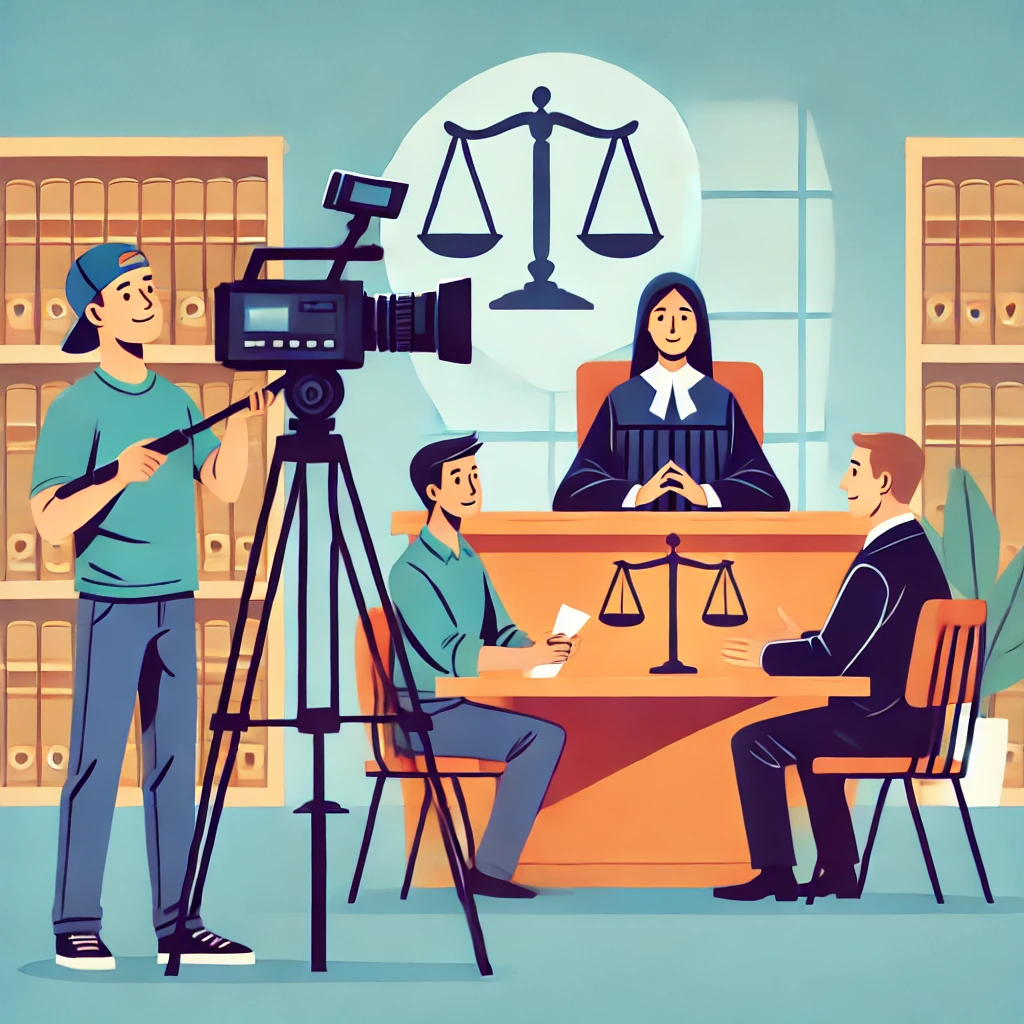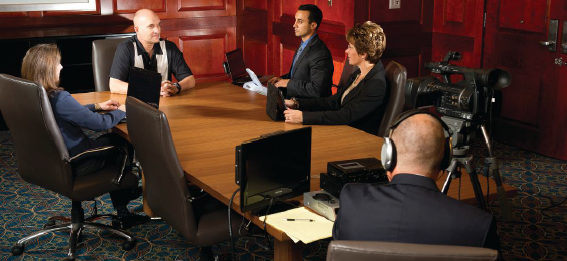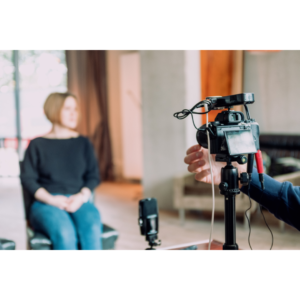The Duty of Lawful Videography in Depositions and Trials
Lawful videography has arised as an essential device in both depositions and trials, offering a multifaceted strategy to recording witness testimonies. As legal specialists progressively acknowledge its worth, it prompts a much deeper evaluation of how these visual documents can influence juror understandings and trial results.

Value of Lawful Videography
Legal videography plays a pivotal duty in the paperwork and presentation of depositions and tests. This specific area integrates technological skills with legal understanding to produce a trustworthy record of process that can substantially affect instance end results. The visual element of legal videography boosts the understanding of witness statement, allowing jurors and judges to observe not just the talked words but additionally the temperament, emotions, and body movement of the witnesses.
Furthermore, lawful videography supplies an unbiased account of events, lessening the possibility for misconception that can accompany created transcripts alone. This aesthetic documents acts as a critical device during trial discussions, promoting a more clear and more persuasive story for both complainants and accuseds. The capacity to replay video sectors during court proceedings makes it possible for legal teams to highlight key factors, enhancing their debates efficiently.
The significance of lawful videography prolongs past the court; it also plays a crucial role in maintaining evidence for future referral, whether for charms or further lawful action. Therefore, its integration right into the legal procedure is vital for ensuring a reasonable and accurate representation of the realities, eventually contributing to the pursuit of justice.

Process of Legal Videography
While recording the nuances of depositions and tests, the procedure of legal videography entails several important steps that make sure premium, exact recordings. An expert lawful videographer prepares by reviewing the situation products and recognizing the certain needs of the deposition or test. This preparation consists of familiarizing themselves with the participants and the context, which helps in recording relevant details.
On the day of the recording, the videographer establishes the essential tools, which typically includes high-definition cams, microphones, and proper lighting. Making sure optimal angles and sound quality is important, as it directly influences the performance of the recording. The videographer connects with lawyers and individuals to establish procedures, guaranteeing that everybody understands the recording process.
During the deposition or test, the videographer diligently videotapes the procedures, paying attention to both verbal and non-verbal cues. This includes recording the attitude and responses of witnesses and attorneys. After the session concludes, the videographer may modify the video footage for clarity and conformity with lawful requirements, producing an end product that precisely reflects the process for future recommendation and use in lawful contexts.
Benefits in Depositions
The unification of videography in depositions supplies many benefits that improve the overall procedure of collecting evidence. One key advantage is the capacity to catch useful source witness statements with visual and auditory integrity, supplying a more exact representation of the witness's demeanor, tone, and body movement. This multidimensional method permits attorneys and courts to evaluate trustworthiness more properly than conventional written transcripts alone.
In addition, videographed depositions function as an effective tool for protecting testimony. Must a witness come to be inaccessible for trial, their taped deposition can be played in court, ensuring that their evidence continues to be available and appropriate. This facet significantly minimizes the risk of losing vital information that might influence instance outcomes.

Last but not least, videography boosts the overall professionalism and trust of the deposition procedure, instilling self-confidence in customers regarding the thoroughness of their legal representation (legal videography). By leveraging technology, lawful specialists can significantly improve the effectiveness of depositions
Influence On Trials
In numerous trials, the integration of videography can considerably influence the presentation of evidence and the jury's perception. Legal videography records witness testimonies and crucial evidence in a dynamic style, enabling jurors to involve with the product on several levels. This visual component enhances the narration facet of a test, supplying context and psychological vibration that conventional text-based evidence might do not have.
In addition, video clip recordings can work as effective tools for impeachment during interrogation. When disparities develop between a witness's previous declarations and their court testament, video clip proof offers an objective recommendation that can sway jurors' opinions. This immediacy and clearness can boost the reliability of an event's narrative while all at once weakening opposing debates.

Future Trends in Legal Videography
As we look towards the future of legal videography, numerous emerging patterns assure to reshape its function within the courtroom. One considerable fad is the integration of man-made intelligence (AI) in video clip analysis and editing and enhancing. AI can enhance the process of determining vital minutes in taped depositions, enabling lawyers to rapidly access appropriate web content, thereby improving effectiveness in situation prep work.
In addition, the rise of online fact (VIRTUAL REALITY) and augmented reality (AR) innovations is expected to transform exactly how jurors experience evidence. legal videography. By immersing jurors in a simulated atmosphere, these innovations can supply an extra extensive understanding of complicated situations, causing even more informed deliberations
In addition, the boosting demand for remote depositions, his response accelerated by the COVID-19 pandemic, will likely continue. Legal videographers will need to adjust to brand-new software program and systems to make certain high-grade recordings in digital settings.
Last but not least, the expanding emphasis on information safety will demand more stringent protocols for saving and sharing video proof. As the legal landscape develops, lawful videographers need to stay abreast of these fads to keep their significance and effectiveness in the judicial procedure.
Conclusion
In recap, lawful videography offers an important feature in the judicial procedure, boosting the integrity of depositions and trials. As innovation proceeds to advance, legal videography is poised to further transform its function within the lawful landscape.